Topptur på ski handler ikke bare om fysisk form – det er også et mentalt spill. Det uforutsigbare terrenget og de høye innsatsene utfordrer sinnet ditt like mye som kroppen. Slik er det:
- Frykt: Skred, bratte bakker og skjulte farer kan få hjertet til å slå raskt. Men frykt er et overlevelsesverktøy – å lære å håndtere det er nøkkelen.
- Beslutningstretthet: Endeløse valg, som rutevalg eller snøstabilitet, kan tømme hjernen din og føre til feil.
- Selvtillit: For mye kan gjøre deg hensynsløs. For lite kan føre til nøling, noe som kan være like risikabelt.
Den gode nyheten? Du kan takle disse utfordringene med forberedelse, mentale teknikker og riktig utstyr. For eksempel kan det å forenkle oppsettet ditt med lett, brukervennlig utstyr som Snowfeet* WALKSKI Backcountry Touring Skis redusere stress og holde fokuset på bakkene. Legg til skredtrening, rutiner før nedkjøring og visualiseringsøvelser for å holde deg skjerpet og trygg.
Topptur på ski belønner forberedelse og et klart sinn. Lær mentale ferdigheter, stol på utstyret ditt, og nyt turen.
Opp- og nedturer: Drew Petersen om å navigere fjell og daler i mental helse gjennom ski
3 hovedmentale utfordringer ved topptur på ski
Topptur på ski er ikke bare en fysisk test – det er også en mental test. Det uforutsigbare terrenget og de høye innsatsene kan presse sinnet til det ytterste. Faktisk tyder forskning på at mental utmattelse kan være like slitsomt som fysisk utmattelse. La oss bryte ned tre viktige mentale utfordringer – frykt, beslutningstretthet og selvtillitsproblemer – og hvordan de former opplevelsen din i fjellet.
Frykt: Å navigere risiko og det ukjente
Frykt oppleves annerledes i fjellet. I motsetning til det kontrollerte miljøet i en skiresort, er terrenget i fjellet fullt av overraskelser. Snøskred, bratte skråninger og skjulte hindringer kan utløse en stressrespons som gjør tankene uklare og reaksjonene langsommere.
Men frykt er ikke bare negativt – det er et overlevelsesverktøy. Idrettspsykolog Dr. Nicole Detling forklarer det godt:
"Du må finne riktig mengde for deg... Hvis du er en ganske nervøs person og føler frykt, vil det være din norm."
Trikset er å finne riktig balanse. For mye frykt kan lamme deg, mens for lite kan gjøre deg hensynsløs og ignorere varselsignaler som ustabil snø eller forverret vær.
Kristen Ulmer, en fryktspesialist, tilbyr et unikt perspektiv i sine Art of Fear-klinikker. Hun lærer skiløpere å jobbe med frykten i stedet for å kjempe mot den:
"Frykt skal flyte som vann gjennom en slange gjennom kroppen din... Øyeblikket vi fanger frykt i kroppen, begynner den å sirkulere på nytt og oppføre seg på alle slags rare måter."
Skikjørere som omfavner hennes tilnærming rapporterer at de føler seg mer selvsikre og i kontroll, og lærer å se frykt som en veiviser i stedet for en fiende.
Beslutningstretthet: Den mentale belastningen av konstante valg
Topptur på ski er en uavbrutt rekke av beslutninger. Hvilken rute skal du ta, hvor stabilt er snøen, endrer været seg, bør du justere utstyret? Den mentale belastningen øker raskt, noe som fører til beslutningstretthet – en tilstand hvor hjernen din begynner å kortslutte.
Blase Reardon, en snøskredekspert, forklarer hvorfor dette er viktig:
"Høykvalitets tenkning og høykvalitets beslutningstaking tar tid."
Dette er spesielt vanskelig for nybegynnere. Uten mye erfaring å støtte seg på, føles hvert valg tyngre og krever mer mental innsats. Studier viser at nybegynnere er mer utsatt for utmattelse fordi de stadig bearbeider ukjent informasjon. Og her er poenget: når din mentale energi tømmes, blir evnen til å ta smarte, potensielt livsviktige beslutninger dårligere – akkurat når du trenger det mest.
Selvtillit: Å finne den perfekte balansen
Selvtillit er en balansegang i topptur på ski. For mye eller for lite kan begge føre til problemer.
Overmot kan føre deg inn i det eksperter kaller heuristiske feller - mentale snarveier som omgår grundig tenkning. Kanskje du antar at en bakke er trygg fordi den har vært det før, eller overvurderer ferdighetene dine i en krevende nedfart.
På den andre siden kan mangel på selvtillit være like risikabelt. Tvil kan få deg til å fryse, tvile på valgene dine eller stole for mye på andre i stedet for å stole på din egen vurdering. I dynamiske toppturforhold kan nøling være farlig.
Klinisk psykolog Sara Boilen påpeker en viktig sannhet om selvtillitens fallgruver:
"Å være klar over heuristikker gjør oss ikke bedre i stand til å unngå dem."
Med andre ord, det å bare vite at disse fellene finnes er ikke nok til å unngå dem. Å bygge riktig mengde selvtillit krever øvelse og ærlig selvrefleksjon.
Hva gjør det enda vanskeligere? Topptur på ski gir sjelden umiddelbar tilbakemelding. I motsetning til en alpinbakke du kan gjenta og forbedre, er toppturruter ofte en-til-en. Du vet kanskje ikke om valgene dine var gode før mye senere - eller før noe går galt. Forskning viser at selv måten beslutninger blir presentert på kan påvirke hvordan skiløpere oppfatter risiko, noe som legger til et ekstra lag av kompleksitet.
Sammen fremhever disse mentale utfordringene hvorfor topptur på ski handler like mye om tankesettet ditt som dine fysiske ferdigheter. Å forstå dem er det første steget mot å ta smartere, tryggere valg der ute.
Hvordan håndtere frykt under topptur på ski
Frykt i fjellet er ikke noe du bare kan slette - det er en del av opplevelsen. Målet er å håndtere den klokt, ved hjelp av forberedelser og mentale strategier for å holde kontroll.
Forberedelsesmetoder for å redusere angst
Den beste måten å takle frykt på starter lenge før du treffer bakkene. Planlegging før turen er nøkkelen. Studer kart, sjekk skredrapporter, og gjør deg kjent med terrenget for å minimere overraskelser.
Å investere i skredtrening er et annet smart trekk. Å lære om snøvitenskap, gjenkjenne farer og mestre redningsteknikker kan gi deg selvtilliten til å navigere i vanskelige situasjoner.
En annen nyttig teknikk? Visualisering. Før turen, forestill deg selv på ski gjennom utfordrende terreng med rolige, kontrollerte bevegelser. Se for deg hvordan du ville håndtere vanskelige partier. Denne mentale øvelsen hjelper hjernen din å reagere mer naturlig når de øyeblikkene faktisk oppstår.
Og la oss ikke glemme utstyret ditt. Feil utstyr kan få deg til å føle deg klønete og ukomfortabel, noe som bare øker angsten din. Lettvektige, manøvrerbare ski - som Snowfeet* WALKSKI Backcountry Touring Skis (100 cm, omtrent 39 tommer) - kan gjøre en stor forskjell. Pålitelige utstyr lar deg fokusere på terrenget og dine beslutninger i stedet for å bekymre deg for oppsettet ditt.
Pålitelig utstyr er ikke bare praktisk - det er psykologisk. Dr. S. Gerald Hann fant at skiløpere som brukte spesialisert utstyr rapporterte en 30 % reduksjon i angst under tøffe forhold. Fryktekspert Kristen Ulmer fremhever til og med hvordan utstyr kan endre tankesettet ditt:
"Riktig utstyr kan forvandle ditt forhold til frykt i bakkene."
Når du først er ute, er det på tide å lene seg på mentale teknikker for å holde seg stødig.
Mentale teknikker for å holde seg rolig
Frykt utløser ofte overfladisk, rask pusting, noe som kan gjøre deg mer anspent og mindre fokusert. Bekjemp dette med kontrollert pusting. Ta dype, rolige åndedrag som engasjerer mellomgulvet for å roe kroppen og klarne sinnet.
Utvikle en rutine før nedkjøringen for å sentrere deg selv før du tar fatt på en bakke. Løsne opp musklene, sjekk utstyret ditt, og sett en klar intensjon for turen. Disse små ritualene kan hjelpe deg å føle deg mer jordet når alt annet føles usikkert.
Et annet tips? Endre hvordan du tenker på frykt. I stedet for å se det som en trussel, behandle det som en utfordring. Fokuser på hva som skjer i øyeblikket - pusten din, følelsen av snøen under skiene - i stedet for å spinne inn i «hva om»-scenarier.
Idrettspsykolog Dr. Nicole Detling understreker viktigheten av å omfavne frykt som en del av eventyret:
"Frykt kan skyve beslutningstaking i skyggene, og en panisk turkamerat kan snu og forlate deg i stikken."
Redusere beslutningstretthet i fjellet
Topptur-ski er fullt av beslutninger - velge ruter, vurdere vær, og reagere på skiftende forhold. Alt dette kan tære på din mentale energi. Beslutningstretthet er ingen spøk, spesielt når du navigerer i skredterreng hvor dårlige valg kan få alvorlige konsekvenser.
Fordelen? Du kan lette denne mentale belastningen med smartere utstyrsvalg og god gruppeplanlegging. En av de enkleste måtene å frigjøre mental kapasitet på er å forenkle utstyrsoppsettet ditt.
Forenkle utstyret ditt for å spare mental energi
Tradisjonelle skioppsett kan føles som et puslespill. Du må sjekke om støvlene dine passer til bindingene, justere skiinnstillinger etter terrenget, og finne ut hvordan du pakker alt effektivt. Når du er klar til å dra, har du allerede brukt opp noe av din mentale energi.
Møt Snowfeet* WALKSKI Backcountry Touring Skis. Disse 100 cm (omtrent 39 tommer) skiene er designet for å fungere med dine vanlige vintersko - ingen spesielle sko, ingen kompatibilitetsproblemer, ingen endeløse justeringer. Bare ta dem og kast deg ut i snøen.
Chad Brackelsberg, tidligere administrerende direktør for Utah Avalanche Center, treffer spikeren på hodet:
"Å forenkle utstyr for å redusere mental belastning er avgjørende for å opprettholde fokus og sikkerhet i villmarken."
Og det handler ikke bare om bekvemmelighet – det er en revolusjon i feltet. I mars 2023 rapporterte en gruppe skiløpere som brukte Snowfeet* at de reduserte utstyrsovergangstiden med 30 % sammenlignet med tradisjonelle oppsett. Det gir mer tid og energi til å fokusere på navigasjon og snøskredsikkerhet i stedet for å fikle med utstyr.
Profesjonell fjellklatrer Caroline Gleich fremhever det større bildet:
"Å forenkle utstyret ditt letter ikke bare byrden, men klargjør også sinnet, slik at du kan fokusere på terrenget og gruppen din."
Utover den mentale lettelsen, er det en økonomisk bonus. Tradisjonelle oppsett koster ofte over 600 dollar, mens Snowfeet* ligger på rundt 199 dollar. Mindre kostnad, mindre kompleksitet, mindre stress.
Bygg et sterkt system for gruppkommunikasjon
God gruppkommunikasjon er en annen måte å bekjempe beslutningstretthet på. Å dele den mentale belastningen i teamet sikrer at ingen blir overveldet.
Start med å tildele roller. Gjør én person til ruteplanlegger, en annen til væransvarlig, og en annen til sikkerhetsleder. Selv om alle bør bidra, garanterer disse rollene at viktige oppgaver blir dekket uten forvirring.
Bruk av rammeverk som ALPTRUTH kan hjelpe med å strukturere gruppediskusjoner om forhold og risiko. Dette sikrer at alle, uansett erfaringsnivå, deler sine observasjoner. Ryan Kitchen, en AIARE-instruktør, understreker viktigheten av dette:
"Enten du er den minst erfarne eller den mest erfarne i en gruppe, må du ha en mening basert på dine personlige observasjoner."
Sjekklister kan også være livredderen. De fungerer som en backup for hjernen din, og hjelper deg å holde oversikt over utstyrssjekker, værvurderinger og ruteplanlegging, selv når du er sliten.
Etter turen, ta deg tid til å debriefe. Snakk om hva som fungerte, hva som ikke gjorde det, og hvordan gruppedynamikken påvirket beslutningene. Disse samtalene bygger bedre vaner og sterkere lagarbeid for neste eventyr.
Forskning viser at beslutningstretthet kan føre til dårlige valg i høyrisikosituasjoner. Ved å holde utstyret ditt enkelt og gruppen organisert, får du mental klarhet til å ta smarte avgjørelser når det virkelig gjelder. Strømlinjeformet utstyr og klar kommunikasjon er ikke bare hyggelige å ha – de er essensielle verktøy for å holde seg trygg og selvsikker i villmarken.
sbb-itb-17ade95
Bygge selvtillit for toppturski
Selvtillit i toppturski kommer ikke over natten - det er noe du bygger over tid med øvelse, riktig utstyr og noen små seire underveis. Det handler om å finne balansen mellom å forbedre ferdighetene dine og bli komfortabel med utstyret ditt.
Ta det steg for steg for varig selvtillit
Selvtilliten vokser når du starter i det små og jobber deg oppover. Matt, en erfaren toppturskier, oppsummerer det perfekt:
"Det krever bare øvelse for å bli komfortabel i dette miljøet. Gi det tid, du får det tilbake."
Start på skianlegget. Før du drar ut i fjellet, øv på skianlegg. Dette er en flott måte å bli kjent med oppoverkjøring og bygge kondisjonen uten å bekymre deg for snøskredfare. Ved å fokusere på det grunnleggende - som å svinge, stoppe og håndtere ulike snøforhold - legger du grunnlaget for suksess når terrenget blir mer utfordrende.
Gjør kroppen klar. Forhåndstrening som fokuserer på å bygge styrke i underkroppen, bevegelighet og balanse er en spillforandrer for toppturski. Sterke ben og god balanse betyr bedre kontroll i bakkene, noe som gir færre fall og mer selvtillit.
Bruk av Snowfeet* WALKSKI Backcountry Touring Skis kan også gjøre en forskjell. Disse skiene er designet for å være mer manøvrerbare enn tradisjonelle, noe som hjelper deg å ta raskere svinger, komme deg lettere etter feil, og møte fall med mindre frykt. Denne typen pålitelighet i utstyret ditt kan fremskynde prosessen med å føle seg hjemme i bakkene.
Når du har fått grunnleggende ferdigheter på plass, kan riktig utstyr løfte selvtilliten din til neste nivå.
Hvordan riktig utstyr gjør en stor forskjell
Å kombinere dine voksende ferdigheter med brukervennlig utstyr kan gjøre skikjøringen jevnere og mer intuitiv. Når utstyret ditt samarbeider med deg, er det lettere å slappe av og nyte turen.
Snowfeet* ski er et flott eksempel på utstyr designet for å eliminere vanlige frustrasjoner. I motsetning til tradisjonelle oppsett som krever spesialiserte, ofte dyre støvler, fungerer Snowfeet* med dine vanlige vintersko. Det betyr at du kan hoppe over innkjøringsperioden og gå rett inn i skikjøringen med fottøy du allerede kjenner og stoler på.
Deres doble bindingssystem gir enda mer allsidighet. Du kan bytte mellom fri hæl-modus for klatring og fast hæl-modus for nedkjøringer. Denne fleksibiliteten gjør det enklere å tilpasse seg skiftende forhold, og gir deg selvtilliten til å takle ulike terreng.
Lett utstyr betyr noe. Tradisjonelle topptur-oppsett kan være tunge, noe som gjør lange stigninger utmattende. Snowfeet* er mye lettere, noe som hjelper deg å spare energi slik at du kan holde kontrollen gjennom hele dagen.
Lansert i februar 2024, har Snowfeet* WALKSKI toppturskiene allerede fått ros for sin evne til å øke selvtilliten. Mange brukere rapporterer at de føler seg mer i kontroll, spesielt i ukjente eller krevende forhold. Deres kompakte 39-tommers (100 cm) design gjør raske svinger og presise retningsendringer mulig, noe som er spesielt nyttig når du navigerer i trange områder som skogsløyper eller smale couloirer.
Her er et annet tips: prøv visualiseringsteknikker før du drar ut. Se for deg at du står på ski med flyt, og øv på den typen selvsnakk du vil bruke i vanskelige situasjoner. Bygg en rutine før nedkjøringen – sjekk kroppen din, slipp spenninger og fokuser på pusten. Disse små mentale vanene kan hjelpe deg å roe nervene og holde fokus.
Som Snowfeet-teamet sier:
"Våre nye Snowfeet* WALKSKI toppturski er designet for å løfte toppturopplevelsen din til neste nivå."
Til rundt 560 dollar er disse skiene konkurransedyktig priset for nybegynnere, men de tilbyr noen unike fordeler du ikke finner i tradisjonelle oppsett. Med funksjoner som kompatibilitet med dine vanlige støvler, lett design og utmerket manøvrerbarhet, er de et selvtillitsboostende valg som kan hjelpe deg å utvikle deg raskere og nyte topptureventyrene enda mer.
Snowfeet* vs tradisjonelt ski- og snowboardutstyr
Utstyret ditt kan gjøre eller ødelegge toppturopplevelsen. Tradisjonelle lange ski og snowboard har vært standard i mange år, men de kommer ofte med ekstra bagasje – både bokstavelig og mentalt. Vekten, kompleksiteten og læringskurven til tradisjonelle oppsett kan øke de mentale utfordringene ved topptur, som frykt, beslutningstretthet og tvil om egne ferdigheter. Derfor er riktig valg av utstyr så viktig.
Hvorfor Snowfeet* kan bli en revolusjon for toppturski
Å bytte til Snowfeet* kan gjøre mer enn bare å lette lasten din – det kan hjelpe deg å rydde hodet og øke selvtilliten i krevende forhold. La oss se nærmere på hvordan Snowfeet* takler disse utfordringene:
Lett utstyr, klarere sinn
Tradisjonelle skioppsett kan veie alt fra 10 til 15 pund, mens Snowfeet* veier bare 5 til 7 pund. Det er en stor forskjell, spesielt når du klatrer oppover eller navigerer i krevende terreng. Mindre vekt betyr mindre fysisk belastning, noe som hjelper deg å spare energi og holder hodet klart for de avgjørende øyeblikkene.
Kompakt design for bedre kontroll
Med en lengde på bare 99 cm (39 tommer) er Snowfeet* mye kortere enn tradisjonelle ski, som ofte overstiger 170 cm (67 tommer). Dette kortere designet gjør dem mer manøvrerbare, slik at du raskt kan reagere på terrengendringer. Som Snowfeet Team sier det:
"En kortere lengde forbedrer manøvrerbarheten, slik at du raskt kan reagere på skiftende forhold samtidig som selvtilliten øker."
Denne ekstra kontrollen kan lette frykten for å miste balansen eller navigere i uforutsigbart toppturterreng, noe som gjør opplevelsen mindre nervepirrende.
Forenklet utstyr, færre valg
Tradisjonelle oppsett kan føles som et puslespill – å matche støvler, bindinger og ski tar tid og krefter. Snowfeet* eliminerer mye av denne kompleksiteten. De er kompatible med dine vanlige vinter- eller snowboardstøvler, og deres doble bindingssystem lar deg enkelt bytte mellom fri hæl-modus for klatring og fast hæl-modus for nedkjøringer. Færre utstyrsvalg betyr mindre mental tretthet og mer fokus på å nyte dagen.
Perfekt for trange steder
Tette skoger og smale couloirer kan være et mareritt med lange ski eller snowboard. Snowfeet* skinner i disse trange områdene. I februar 2024 bemerket Snowfeet Team:
"Korte toppturski utmerker seg i klatring og oppoverbakker, og lar deg mestre stigninger med mindre anstrengelse."
Deres kompakte størrelse gjør dem naturlige for treski og annet trangt terreng.
Enkel klatring
Snowfeet*s lette og smidige design gjør oppoverbakkene mindre slitsomme. Uten byrden av tungt utstyr når du toppen med mer energi og klarere hode, klar til å nyte nedkjøringen fullt ut.
Lett å bære, mindre stress
Glem å slepe på klumpete utstyr. Snowfeet* passer tett i mindre ryggsekker, noe som reduserer stress før turen. Med et lettere og mer bærbart oppsett kan du fokusere på å planlegge ruten og holde deg trygg i stedet for å bekymre deg for hvordan du skal håndtere utstyret.
Nybegynnervennlig design
Tradisjonell topptur kan ta måneder – eller til og med år – å mestre. Snowfeet*, med sin kortere lengde og kompatibilitet med vanlige støvler, gir en jevnere læringskurve. Dette gjør dem til et flott valg for nybegynnere som ønsker å bygge selvtillit uten den bratte læringskurven til tradisjonelle oppsett.
Rimelig og praktisk
Til $560 gir Snowfeet* mye valuta for pengene. De forenkler oppsettet ditt, reduserer mental tretthet og øker selvtilliten – alt mens de er rimeligere enn mange tradisjonelle systemer. Denne kombinasjonen av brukervennlige funksjoner og lett design gjør Snowfeet* til en sterk kandidat for alle som ønsker å løfte sin toppturopplevelse.
Konklusjon: Forbedre din toppturopplevelse
Topptur er ikke bare fysisk styrke; å mestre den mentale siden av sporten er like viktig. Ved å ta tak i frykt, beslutningstretthet og selvtillitsproblemer, blir du ikke bare en mer dyktig skiløper, men skaper også tryggere og mer morsomme turer som får deg til å komme tilbake for mer.
Teknikkene vi har diskutert fungerer best når de kombineres. Mentale forberedelsesverktøy som visualisering og snøskred-sikkerhetstrening legger et solid grunnlag. Samtidig reduserer forenkling av utstyrsvalgene dine den mentale belastningen i høyt pressede øyeblikk. Å velge utstyr som øker selvtilliten – som Snowfeet*’s lette og manøvrerbare design – kan fullstendig endre måten du opplever toppturen på.
Og fordelene går utover bare skikjøring. Forskning fra Journal of Exercise and Rehabilitation (mars 2024) fremhever at skikjøring betydelig reduserer stressnivåer, noe som forsterker de mentale helsefordelene ved utendørsaktiviteter. Dette viser hvor viktig det er å forberede seg både mentalt og fysisk for eventyrene dine.
Flere skiløpere oppdager de mentale helsefordelene ved toppturer. Men som klinisk psykolog Sara Boilen, PsyD, klokt påpeker:
"Å være klar over heuristikker gjør oss ikke bedre i stand til å unngå dem."
Her kommer praktisk forberedelse inn i bildet. Kurs i snøskred-sikkerhet, mindfulness-øvelser og valg av enkelt, effektivt utstyr bidrar alle til å ta bedre beslutninger når det virkelig gjelder.
Det flotte med å takle disse mentale utfordringene er at belønningene bygger seg opp over tid. Hver vellykkede tur øker selvtilliten din til neste. Hver god beslutning under press styrker motstandskraften din. Og med forenklet utstyr kan du fokusere mer på å vurdere terreng og forhold, noe som gjør eventyrene dine enda mer givende.
Enten du er nybegynner eller presser grensene for ferdighetene dine, husk at mental motstandskraft er noe du kan bygge. Sett små, oppnåelige mål, invester i riktig trening, og velg utstyr som støtter din utvikling. Toppturen vil alltid by på utfordringer, men med riktig tankesett og verktøy vil du være klar for alt fjellet har å by på.
Vanlige spørsmål
Hvordan kan jeg håndtere frykt mens jeg går på ski i toppturterreng?
Frykt er en naturlig del av topptur, men å håndtere den starter med forberedelse og riktig tankesett. En effektiv strategi er å øve på visualisering før du i det hele tatt treffer snøen. Se for deg ruten din, bevegelsene du skal gjøre, og hvordan du vil håndtere vanskelige situasjoner. Denne typen mental øvelse kan redusere angst og gi selvtilliten et løft.
Når du er i ferd med å starte en nedkjøring, ta et øyeblikk for å sentrere deg selv. Dype, rolige pust kan hjelpe med å slippe spenninger og roe nervene. I stedet for å kjempe mot frykten, prøv å se på den på en annen måte - frykt kan faktisk være et nyttig verktøy. Den skjerper fokuset ditt og holder deg årvåken, noe som er akkurat det du trenger i uforutsigbare fjellforhold. Ved å se frykt som en alliert i stedet for en fiende, vil du møte opplevelsen med et mer positivt syn.
Å ha riktig utstyr spiller også en stor rolle i å håndtere frykt. For eksempel er _Snowfeet WALKSKI toppturski (100 cm)_* et lett og allsidig alternativ. Deres design gir bedre kontroll og manøvrerbarhet sammenlignet med tradisjonelle ski, noe som gjør det enklere å føle seg trygg i krevende terreng. Og når du føler deg mer i kontroll, blir frykten mye lettere å håndtere.
Hvordan kan jeg håndtere beslutningstretthet mens jeg går på topptur?
Å håndtere beslutningstretthet under topptur handler om forberedelse, lagarbeid og å være oppmerksom på mentale snarveier som kan skyve vurderingsevnen i feil retning. Start med å planlegge turen i detalj. Sjekk vær- og snøskredvarsler på forhånd, legg opp noen rutealternativer, og definer tydelig «ikke-gå-soner». Dette forarbeidet hjelper deg å unngå raske avgjørelser når du er ute i fjellet.
I gruppen din, prioriter åpen kommunikasjon. Sørg for at alle føler seg komfortable med å dele observasjoner og uttrykke bekymringer. Ikke stol for mye på én erfaren person – det er lett at skjevheter sniker seg inn når én stemme dominerer beslutningene. Vær oppmerksom på vanlige mentale fallgruver, som å holde seg til terreng du kjenner bare fordi det er kjent, eller å presse på når det kanskje er tryggere å snu.
Og her er greia: det er absolutt ingen skam i å spille på sikkerhet. Hvis forholdene føles usikre, stol på magefølelsen og ta det konservative valget. Å utvikle mental motstandskraft og øve på disse vanene kan hjelpe deg å holde deg skjerpet og gjøre topptureventyrene tryggere og mer morsomme.
Hvordan forbedrer Snowfeet* WALKSKI toppturski toppturopplevelsen sammenlignet med tradisjonelle ski eller snowboard?
Snowfeet* WALKSKI toppturski tilbyr en ny tilnærming til å ta fatt på fjellet, og kombinerer det beste fra ski og fottur i ett kompakt pakke. Med bare 100 cm lengde handler disse skiene om smidighet og kontroll – perfekte for å svinge gjennom trange partier eller takle ujevnt terreng der tradisjonelle oppsett kan føles overdrevent.
Det som virkelig skiller Snowfeet* WALKSKIs er deres lette, bærbare design. De er en lek å bære, noe som reduserer både fysisk belastning og mental tretthet som kan komme med lange toppturer. I tillegg trenger du ikke slepe med deg en haug med klumpete utstyr. Disse skiene gjør oppoverbakkene effektive og nedoverbakkene glatte, og gir deg friheten til å utforske uten bryet med spesialisert utstyr.
For de som ønsker å skjerpe toppturferdighetene eller bare nyte turen mer, er Snowfeet* WALKSKIs en revolusjon. De gjør opplevelsen mindre om å slite med utstyr og mer om å nyte eventyret.








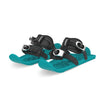

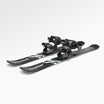



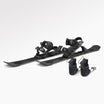








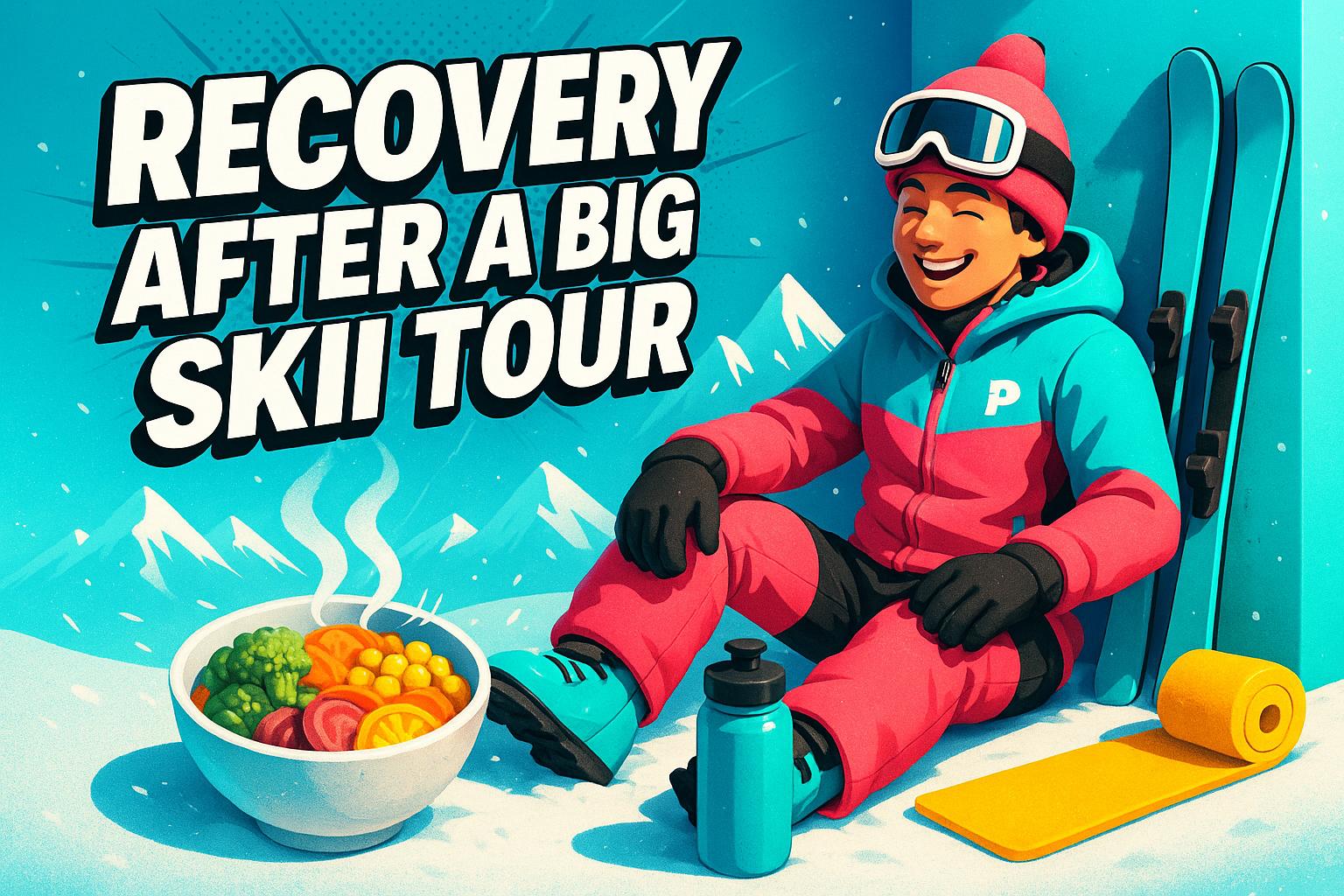

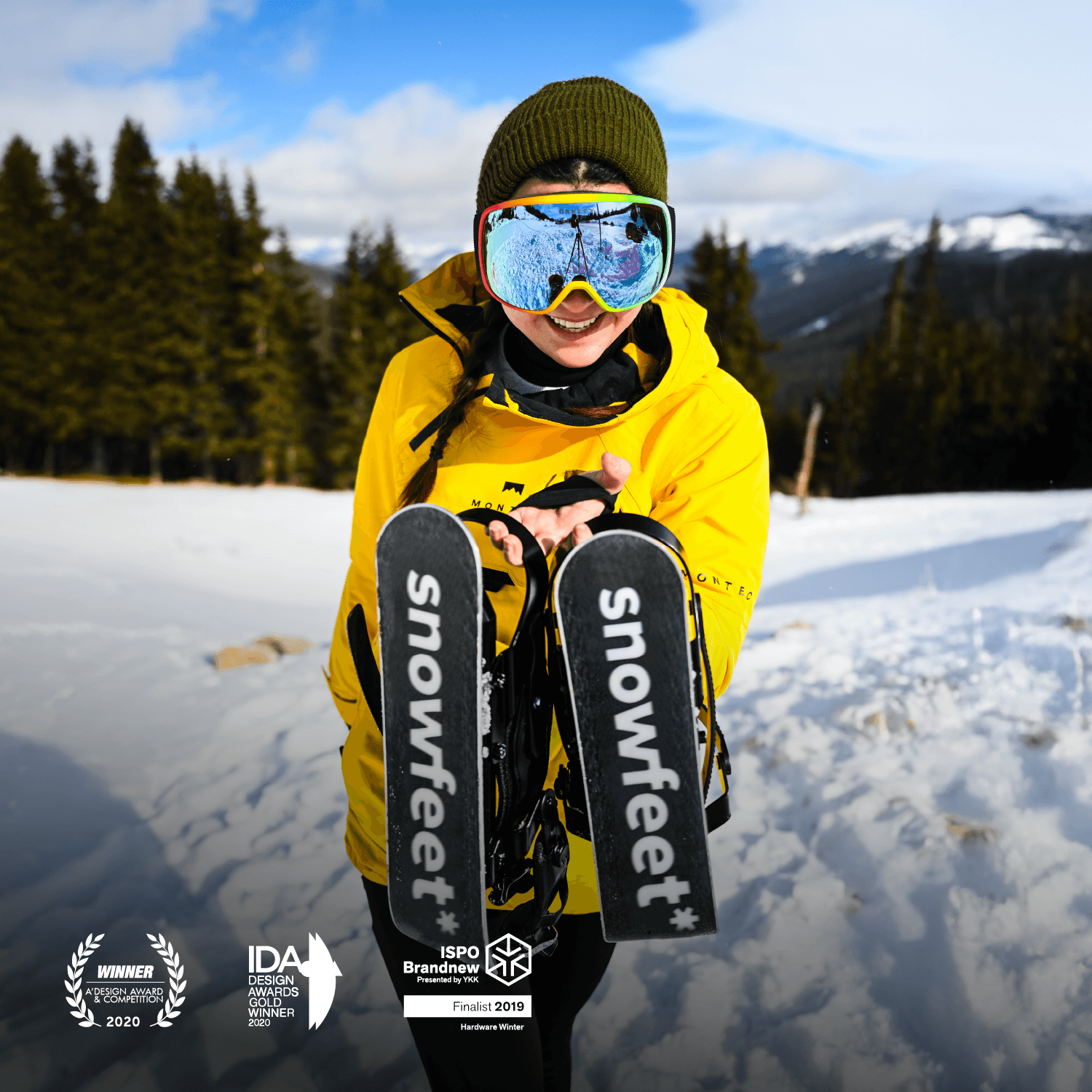

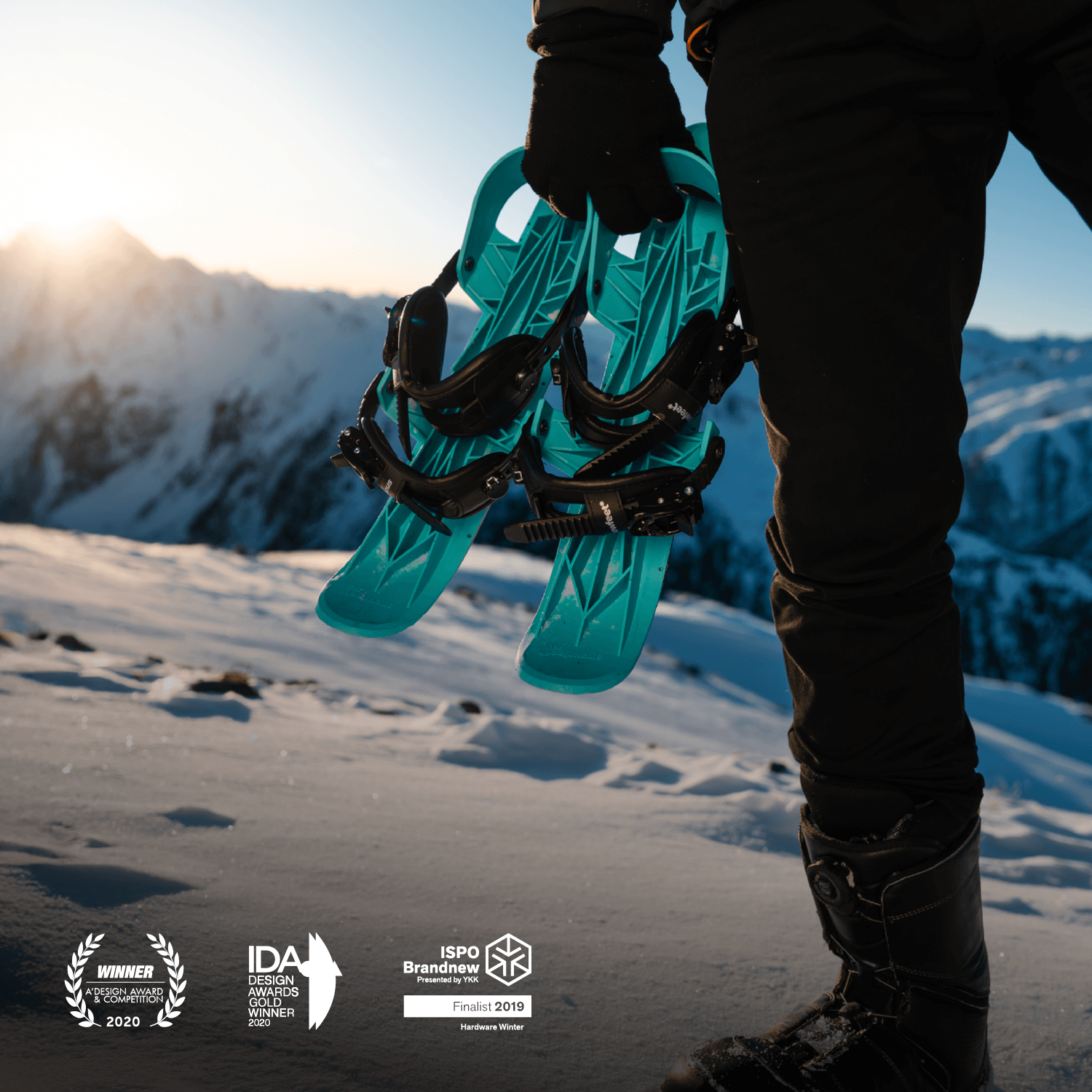
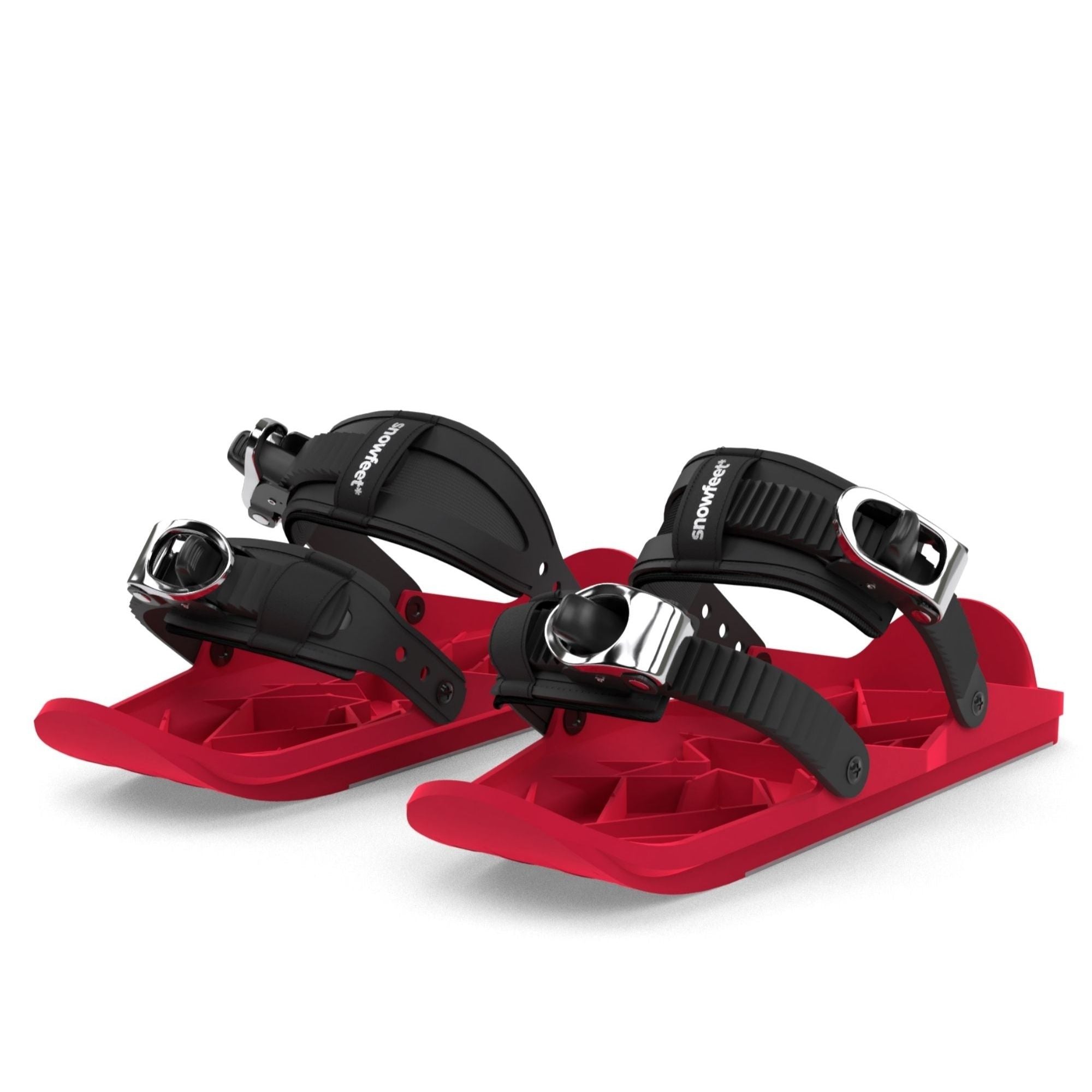



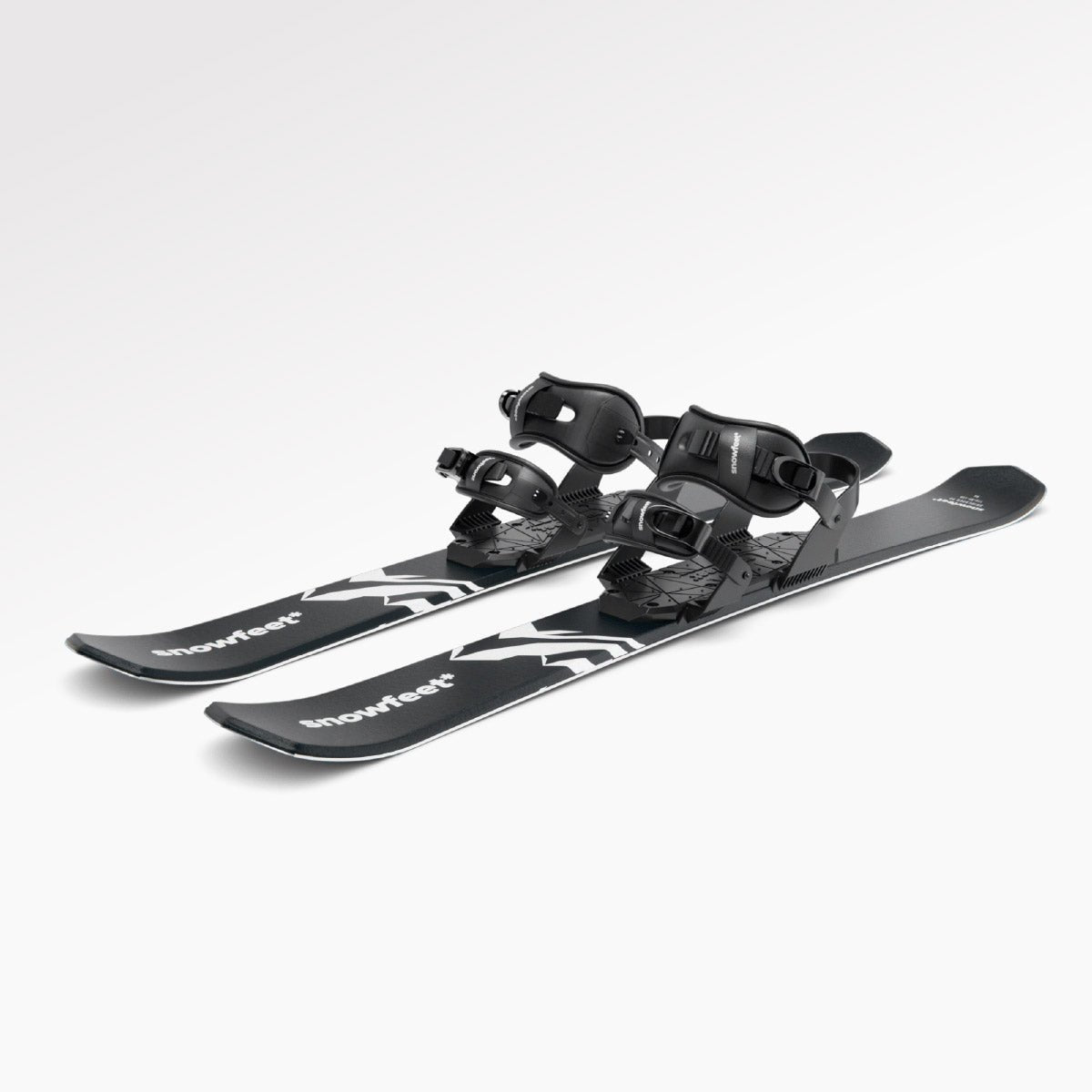
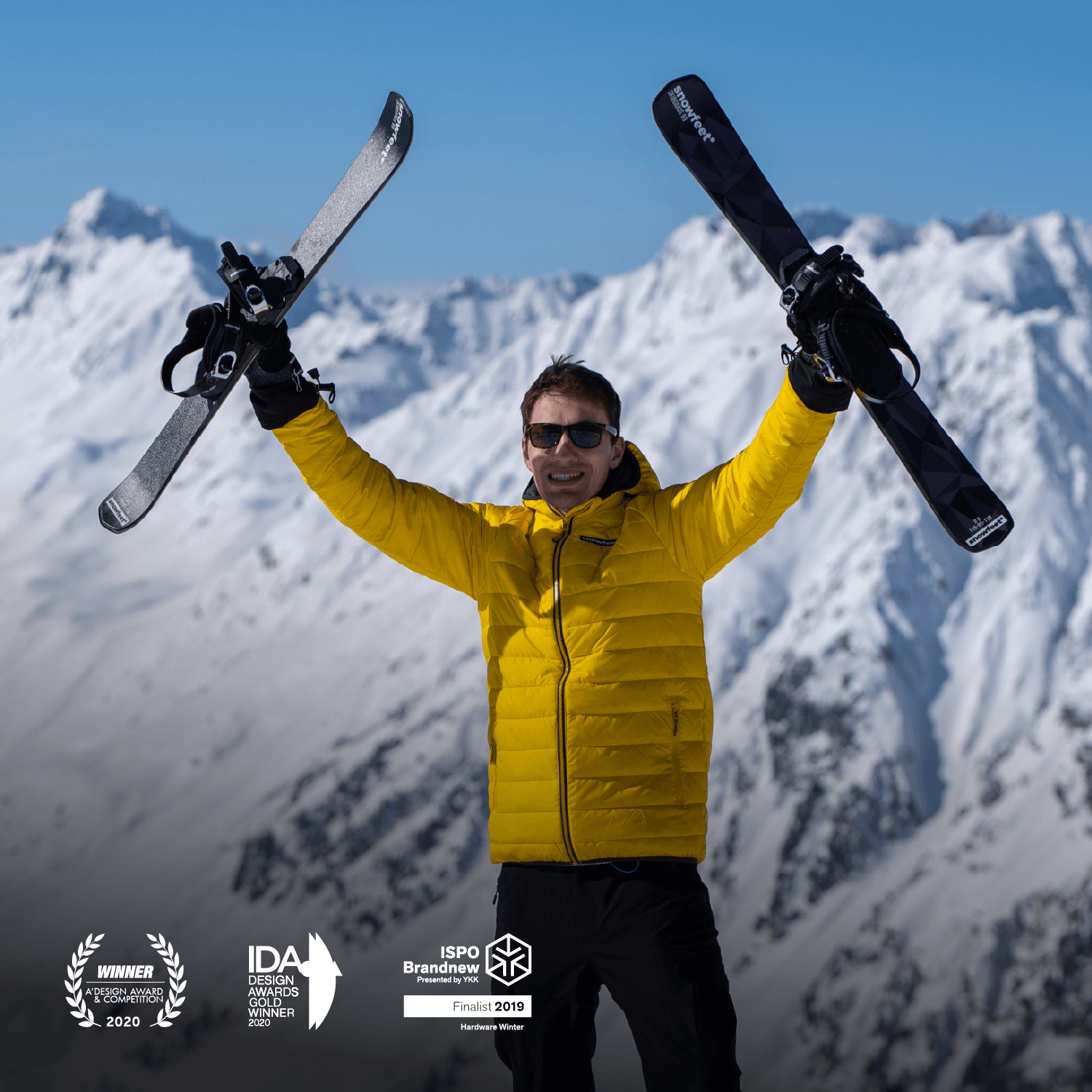
Legg igjen en kommentar
This site is protected by hCaptcha and the hCaptcha Privacy Policy and Terms of Service apply.